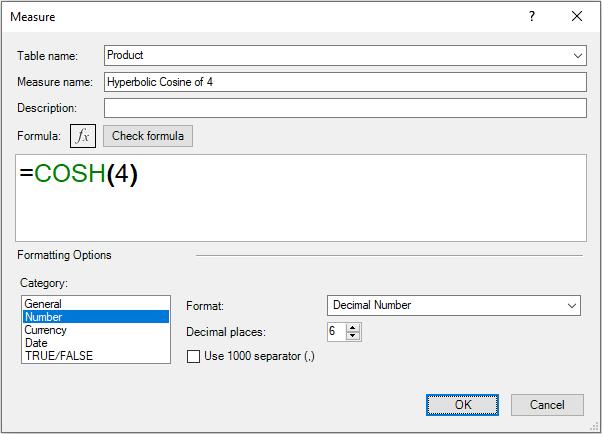Power Pivot Principles: The A to Z of DAX Functions – COSH
9 August 2022
In our long-established Power Pivot Principles articles, we continue our series on the A to Z of Data Analysis eXpression (DAX) functions. This week, we look at COSH.
The COSH function
You probably think we talk a load of hyperbolics here, but that’s what happens when we are under the COSH. This function returns the hyperbolic cosine of a number.
That’s all well and good if you know what “hyperbolic cosine” means. In mathematics, hyperbolic functions are analogous to the trigonometric, or circular, functions, such as sine and cosine.
Just as the points (cos t, sin t) form a circle with a unit radius, the points (cosh z, sinh z) form the right half of the equilateral hyperbola (please see the figure below). The hyperbolic functions take a real argument called a hyperbolic angle. The size of a hyperbolic angle is twice the area of its hyperbolic sector. The hyperbolic functions may be defined in terms of the legs of a right triangle covering this sector.
Hyperbolic functions occur in the solutions of many linear differential equations, such as some cubic equations. Further, in complex analysis, the hyperbolic functions arise as the imaginary parts of sine and cosine – but that’s a story for another day.

The COSH function employs the following syntax to operate:
COSH(number)
The COSH function has the following arguments:
- number: this is required and represents any real number for which you want to find the hyperbolic cosine.
It should be further noted that the formula for the hyperbolic cosine is:

This function is not supported for use in DirectQuery mode when used in calculated columns or row-level security (RLS) rules
Please see my example below:


Come back next week for our next post on Power Pivot in the Blog section. In the meantime, please remember we have training in Power Pivot which you can find out more about here. If you wish to catch up on past articles in the meantime, you can find all of our Past Power Pivot blogs here.

